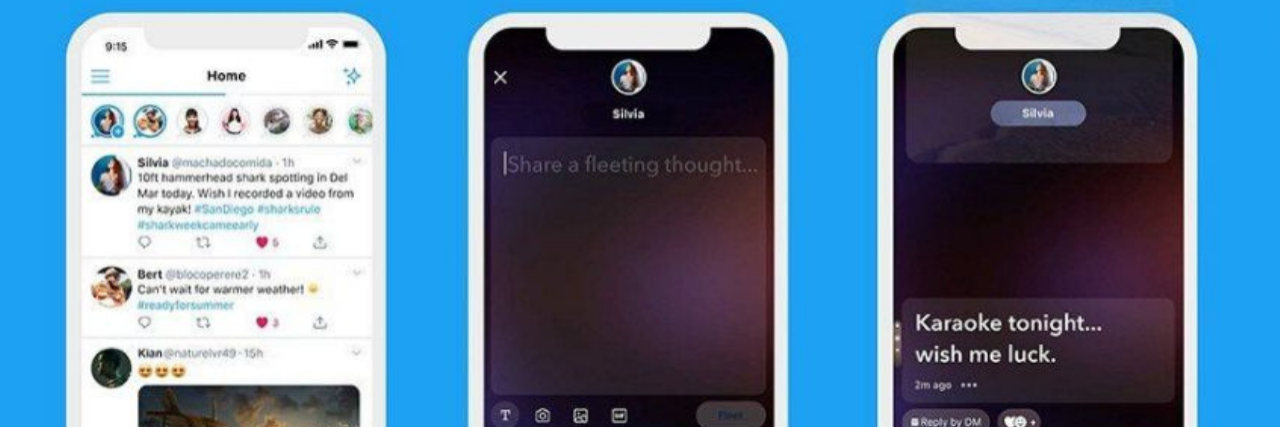What happened: Twitter rolled out a new feature called fleets on Tuesday to rival the “stories” function of other social media platforms. Similar to Instagram and Facebook stories, people can add images, videos and text-based messages to their fleets, which will stay up for 24 hours. Twitter user @GertieTheDino noted that text-based messages on fleets are can be read by screen readers. She also wrote that people should add alternative text to photos and captions to videos shared on fleets.
Fleet Accessibility Tips: A Thread
Tip 1: Unlike every other variation of this feature, text-based Fleets can be read by a screen reader. Fleets will read your username/the time first, and then gradually get to the text.
— Theresa (@GertieTheDino) November 17, 2020
The Frontlines: According to @GertieTheDino, Twitter’s fleets are the type of “story” accessible to screen readers. Screen readers are an assistive technology that helps people who are blind or visually impaired use their computers, phones and other devices.
- According to a 2019 study, more than 70% of websites analyzed had gaps in their accessibility that made it difficult or impossible for people with low vision or blindness to navigate.
- Accessibility barriers make it difficult for Blind people to use technology across the board. Only 43% of students with low vision use the internet regularly, according to the American Federation for the Blind.
- Perkins School for the Blind has recommendations for etiquette that people can use when texting people with low vision, which could also apply to social media.
Get more on disability: Sign up for our weekly newsletter.
A Mighty Voice: There are many misconceptions about the Blind community, including that they cannot use technology. Contributor Dina Simpson wrote about a viral Facebook post where people implied that because a woman with a cane was on her phone, she must not really be blind.
“What others are seeing in this picture is not what I see. When I look at this picture, I see a visually impaired woman using assistive devices to make this outing safer for herself. However, the comments on this post lead me to believe that everybody thinks this woman is faking her blindness.” You can submit your first-person story, too.
From Our Community:
Things Many Blind People Want You To Know ????????????????????
#justaskdontgrab
Other Things to Know: Different social media platforms and other companies have taken measures to make their products more accessible to the blind community and people with low vision. But, there is still a long way to go. These stories show areas where more accessibility is needed:
- Blind YouTuber Kristy Viers Teaches Tech Companies About Accessibility
- This Education App Is Inaccessible to Me as a Blind Student
- Why Fast Food Signs Are My Nemesis as a Person With Optic Atrophy
How to Take Action: If you want to post your own fleet, you can watch the video from Twitter below to understand how this new feature works. And in general, don’t forget to include an image description every time you share a photo on social media or across the internet.
That thing you didn’t Tweet but wanted to but didn’t but got so close but then were like nah.
We have a place for that now—Fleets!
Rolling out to everyone starting today. pic.twitter.com/auQAHXZMfH
— Twitter (@Twitter) November 17, 2020
Image via Twitter

